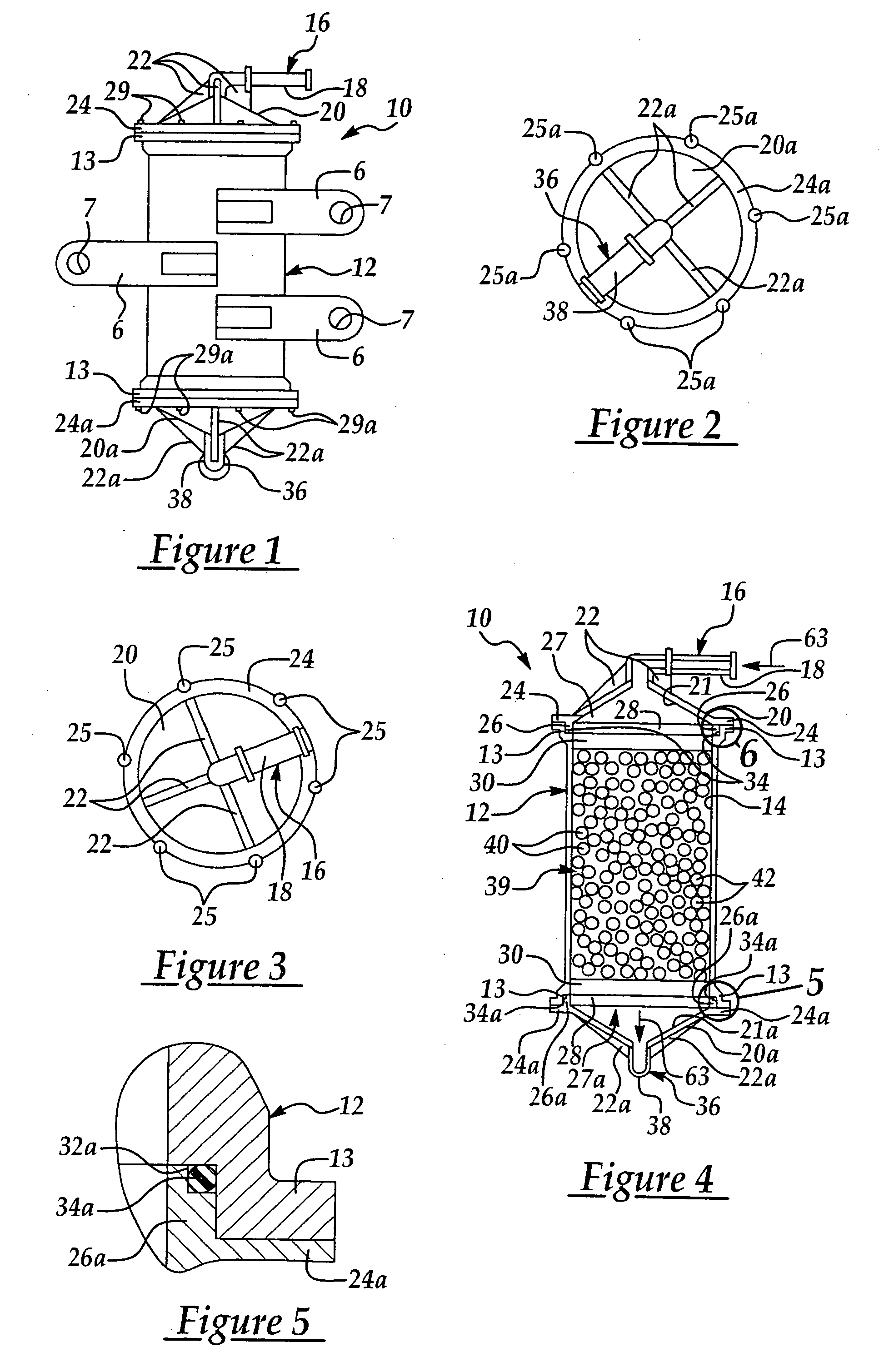Deionization filter for fuel cell vehicle coolant
a technology of fuel cell vehicles and filter elements, applied in the field of deionization filters, can solve the problems of constant leaching of ions from cooling system components, vehicle failure,
- Summary
- Abstract
- Description
- Claims
- Application Information
AI Technical Summary
Problems solved by technology
Method used
Image
Examples
Embodiment Construction
[0020] The present invention contemplates a novel deionization filter for removing ions from a liquid coolant in a cooling system of an electric fuel cell vehicle. The deionization filter typically includes an elongated, cylindrical filter housing which includes a coolant inlet port, typically at the upper end of the housing, and a coolant outlet port, typically at the lower end of the housing. Between the coolant inlet port and the coolant outlet port, the housing contains an ion exchange resin bed having positively-charged anion exchange beads for binding negatively-charged anions in the coolant and negatively-charged cation exchange beads for binding positively-charged cations in the coolant.
[0021] Referring initially to FIGS. 1-9, an illustrative embodiment of the deionization (DI) filter of the present invention is generally indicated by reference numeral 10. The DI filter 10 includes an elongated, typically cylindrical filter housing 12 which is typically a lightweight plasti...
PUM
| Property | Measurement | Unit |
|---|---|---|
| Electrical conductivity | aaaaa | aaaaa |
| Efficiency | aaaaa | aaaaa |
Abstract
Description
Claims
Application Information
 Login to View More
Login to View More - R&D
- Intellectual Property
- Life Sciences
- Materials
- Tech Scout
- Unparalleled Data Quality
- Higher Quality Content
- 60% Fewer Hallucinations
Browse by: Latest US Patents, China's latest patents, Technical Efficacy Thesaurus, Application Domain, Technology Topic, Popular Technical Reports.
© 2025 PatSnap. All rights reserved.Legal|Privacy policy|Modern Slavery Act Transparency Statement|Sitemap|About US| Contact US: help@patsnap.com



